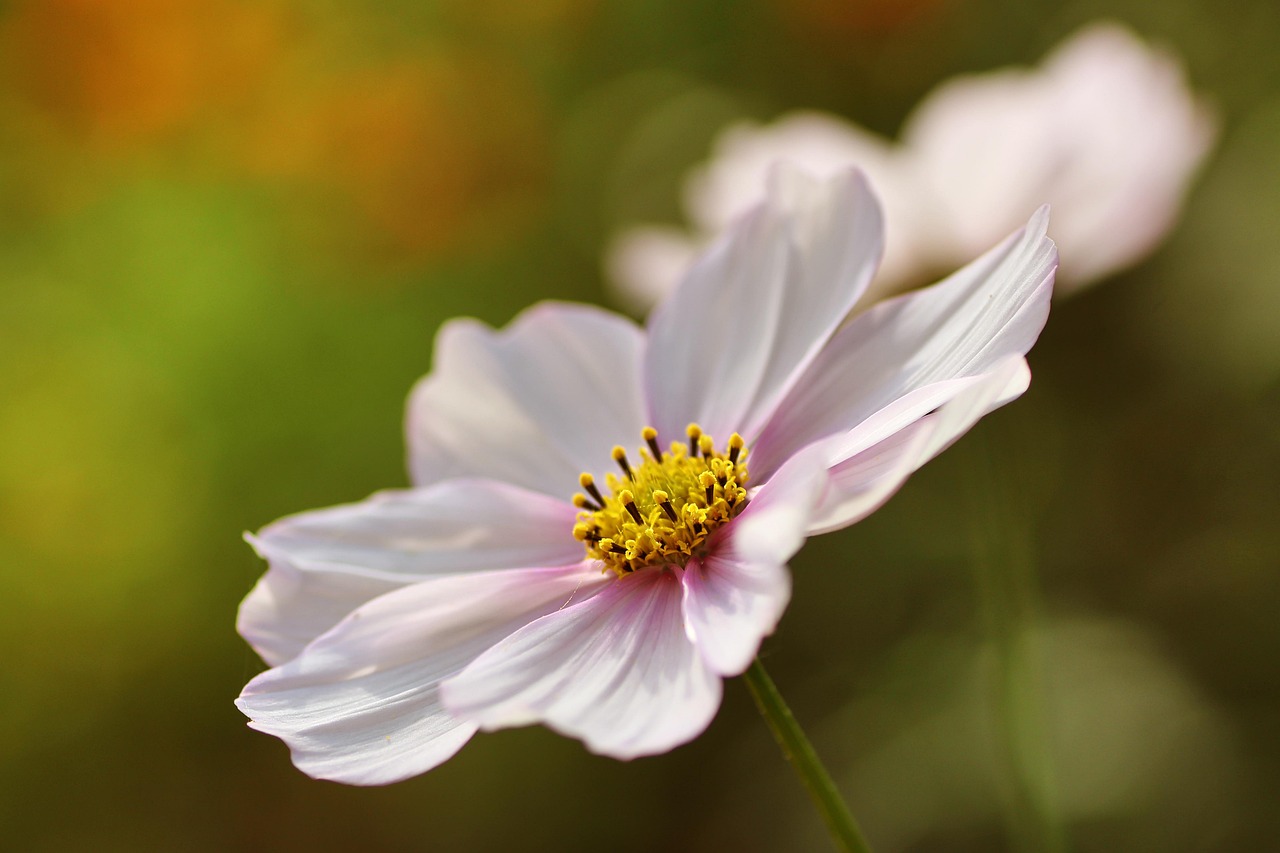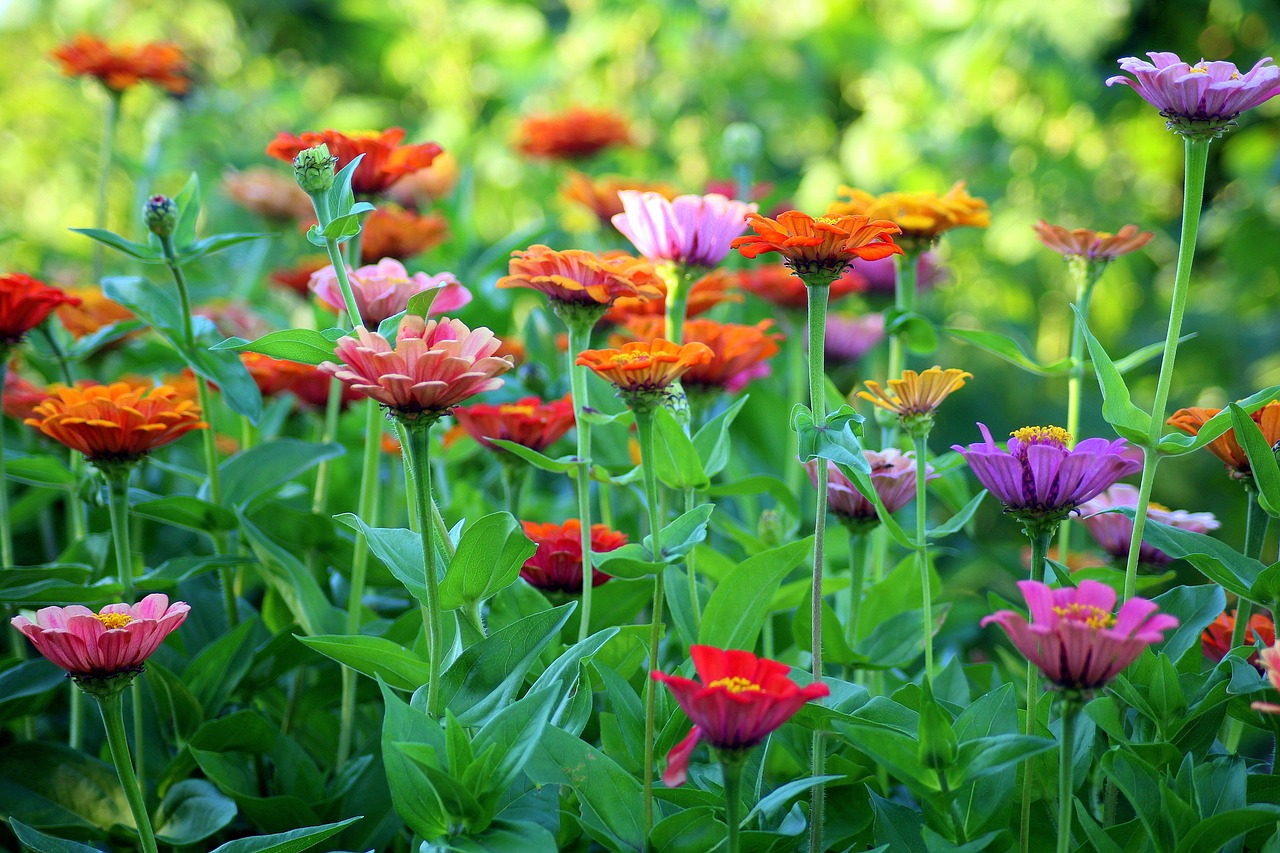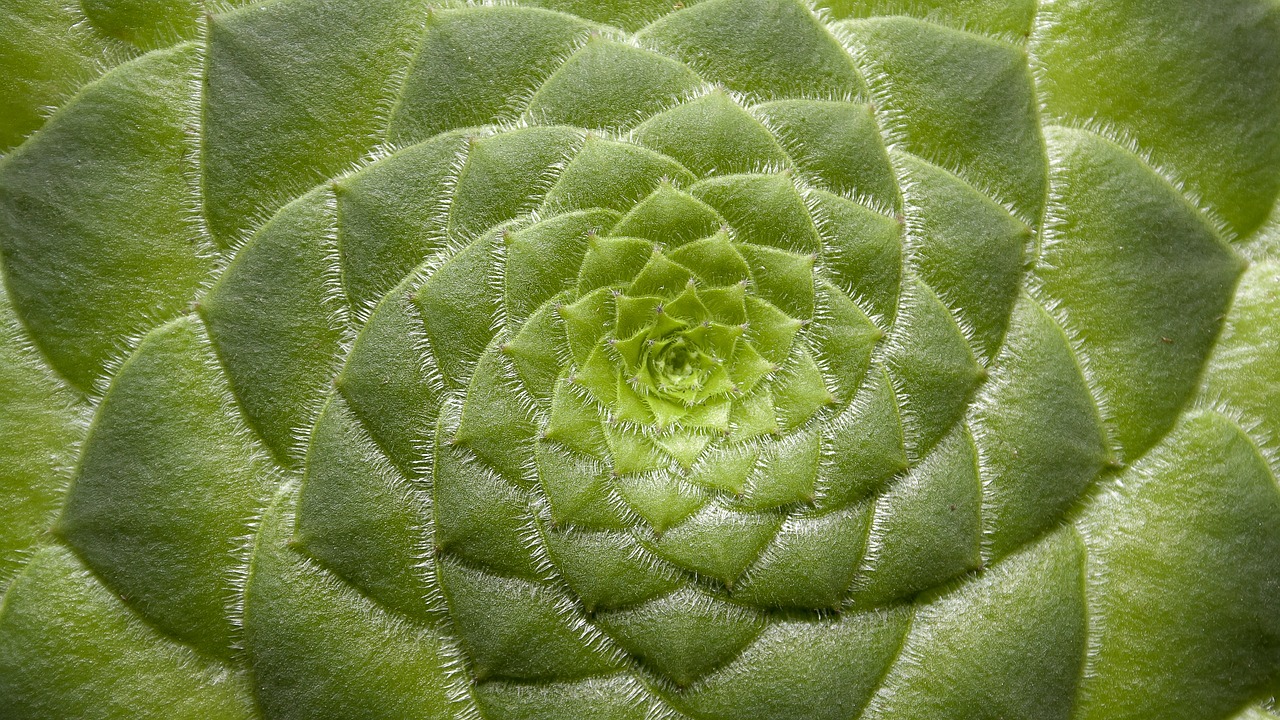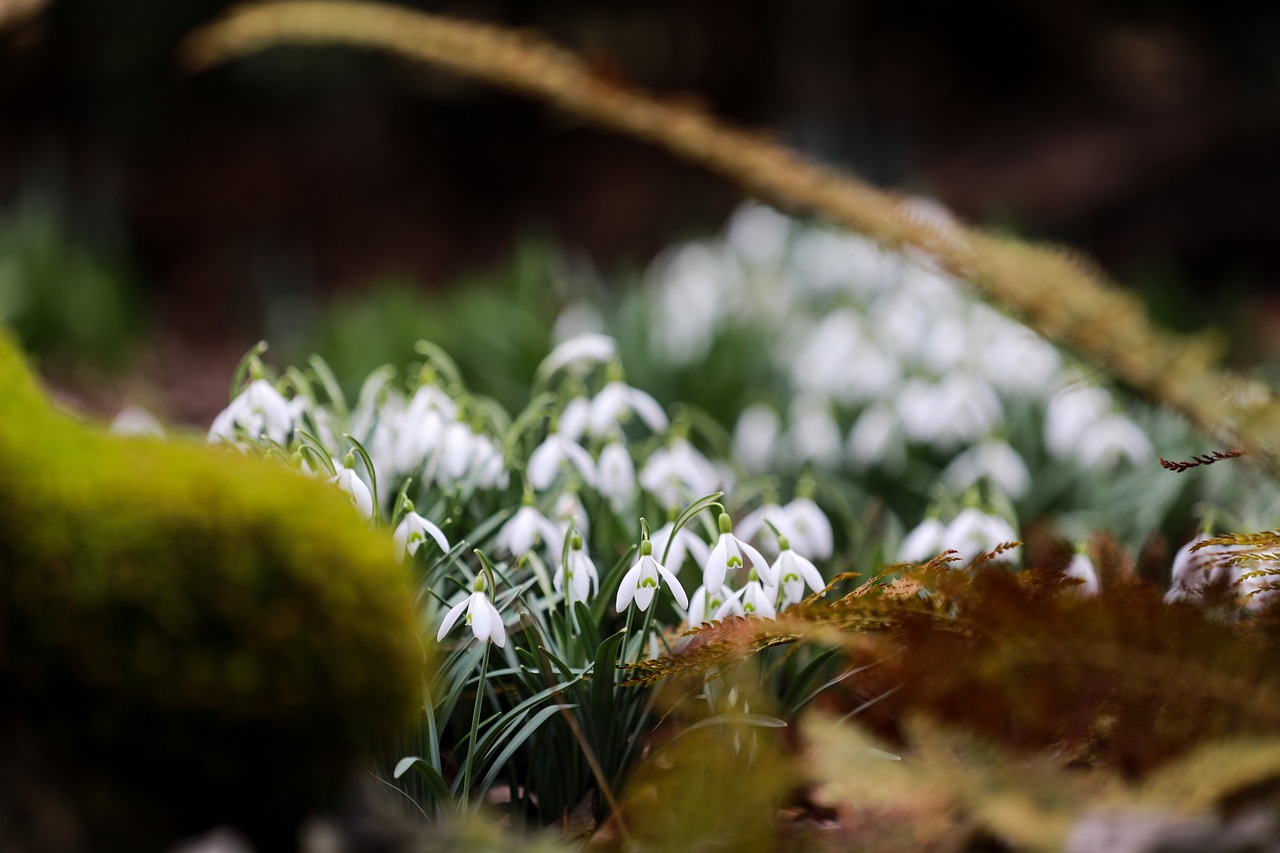How to Create a Self-Sustaining Garden with Permaculture Principles?
Creating a self-sustaining garden using permaculture principles is not just a gardening technique; it's a lifestyle choice that resonates with our innate desire to live in harmony with nature. Imagine walking through your garden, surrounded by vibrant plants, buzzing bees, and the gentle sounds of nature. This isn’t just a dream; it can be your reality! By adopting permaculture practices, you can cultivate a thriving ecosystem that not only produces food but also supports local wildlife and enhances the health of your soil.
At its core, permaculture is about working with nature rather than against it. It's a philosophy that encourages us to observe natural patterns and mimic them in our gardening practices. This means understanding how plants interact with each other, how water moves through landscapes, and how to create a balanced ecosystem. Through thoughtful design and a bit of creativity, you can transform your garden into a self-sufficient paradise.
So, where do you begin? The first step is to assess your space. Take a good look at your garden area. What are its strengths and weaknesses? Is it sunny, shady, or a mix of both? Understanding the microclimates in your garden will help you choose the right plants and design elements that will thrive. Remember, every garden is unique, much like its gardener! Embrace your individuality and let it shine through in your garden design.
Next, think about the elements of permaculture design. This includes zoning your garden based on the frequency of use and the needs of your plants. For example, place your most frequently harvested crops close to your kitchen for easy access. Additionally, consider creating diverse plant layers, from tall trees to low-growing ground covers, to maximize space and resources. This layered approach not only increases productivity but also enhances biodiversity, making your garden more resilient.
As you embark on this journey, remember that patience is key. A self-sustaining garden doesn't happen overnight. It requires time, observation, and a willingness to adapt. You'll learn what works and what doesn't, and that's part of the beauty of gardening. Each season brings new challenges and rewards, so embrace the journey and enjoy the process.
In conclusion, creating a self-sustaining garden using permaculture principles is a fulfilling endeavor that connects you with nature and promotes sustainability. It's about building a garden that not only feeds you but also enriches the environment. So grab your gardening gloves, roll up your sleeves, and let’s get started on this exciting adventure!
- What is permaculture? Permaculture is a design system that seeks to create sustainable and self-sufficient agricultural ecosystems by mimicking natural processes.
- Can I start a permaculture garden in a small space? Absolutely! Permaculture can be applied in any size garden, including balconies and small yards.
- What are some easy plants to start with? Consider starting with herbs like basil and mint, or vegetables like lettuce and radishes, which are easy to grow and maintain.
- How do I maintain soil health? Regularly add organic matter, practice crop rotation, and avoid using synthetic fertilizers to keep your soil healthy.

Understanding Permaculture Basics
Permaculture is more than just a gardening technique; it’s a comprehensive philosophy that encourages us to work in harmony with nature. Imagine a world where gardens flourish without constant intervention, where ecosystems thrive, and biodiversity is celebrated. At its core, permaculture is about creating sustainable systems that mimic natural ecosystems, allowing us to grow food while nurturing the environment. This holistic approach is built on a set of principles that guide us in designing our gardens and landscapes.
One of the fundamental ideas in permaculture is the concept of working with nature rather than against it. This means observing natural patterns and processes, then using that knowledge to create systems that are resilient and self-sustaining. For instance, instead of relying solely on chemical fertilizers, permaculture encourages the use of organic matter, such as compost, to enrich the soil naturally. By doing so, we not only feed our plants but also improve the soil structure and promote a healthy ecosystem.
Another key aspect of permaculture is the emphasis on biodiversity. A diverse garden is more resilient to pests, diseases, and environmental changes. By incorporating a variety of plants, including native species, we create a balanced ecosystem that supports beneficial insects and wildlife. For example, planting flowers alongside vegetables can attract pollinators, ensuring that our crops are fertilized and productive. This is where companion planting comes into play, as certain plants can enhance each other's growth and deter pests.
Permaculture principles also advocate for zoning, which involves strategically placing elements in our gardens based on their needs and our accessibility. For example, placing frequently harvested crops close to the kitchen minimizes the effort required to gather fresh produce. This thoughtful arrangement not only saves time but also encourages regular interaction with our gardens, fostering a deeper connection to the land.
In summary, understanding the basics of permaculture is essential for anyone looking to create a self-sustaining garden. By embracing the principles of working with nature, promoting biodiversity, and implementing smart design strategies, we can cultivate spaces that are not only productive but also beneficial for the environment. As we dive deeper into the specifics of designing our gardens, remember that each choice we make can either enhance or diminish the natural balance we seek to achieve.

Designing Your Garden Layout
When it comes to creating a self-sustaining garden, the layout is everything. Imagine your garden as a well-orchestrated symphony, where each plant plays its part in harmony with the others. The key to achieving this balance lies in effective planning. Start by observing your space. Take note of the sun's path, the wind's direction, and the natural contours of the land. This will help you understand how to position your plants for maximum sunlight and protection from harsh weather. By working with nature instead of against it, you set the stage for a flourishing ecosystem.
Next, consider the concept of zones. In permaculture, zones refer to the arrangement of elements based on their frequency of use and care. For instance, your herbs and salad greens, which you harvest often, should be placed closest to your kitchen. Meanwhile, fruit trees, which require less frequent attention, can be planted further away. This zoning not only saves you time but also minimizes the energy spent on maintenance. Think of it as creating a little neighborhood within your garden, where each plant has its own designated area based on its needs.
Another crucial aspect of garden layout is companion planting. This technique involves placing plants together that benefit one another, creating a supportive environment. For example, did you know that tomatoes thrive when planted alongside basil? Not only do they taste great together in a salad, but basil can also help repel pests that typically bother tomatoes. By designing your garden with these relationships in mind, you enhance biodiversity and reduce the need for chemical interventions.
Water management is also a vital consideration when designing your garden layout. Incorporating features like swales or rain gardens can help direct water flow and retain moisture in the soil. Swales are shallow trenches that follow the contour of the land, allowing water to soak into the ground rather than running off. This not only conserves water but also nourishes your plants. In essence, your garden layout should be a reflection of the natural landscape, working with its topography rather than against it.
Finally, don't forget about aesthetics! While functionality is critical, a beautiful garden layout can enhance your enjoyment and connection to your space. Consider incorporating pathways, seating areas, and even art installations made from natural materials. These elements can create a welcoming atmosphere, inviting you to spend more time in your garden. After all, a self-sustaining garden is not just about productivity; it’s also about cultivating joy and peace in your outdoor sanctuary.
- What is the best way to start designing my garden layout? Begin by assessing your space, noting sunlight, wind, and existing features. Sketch a rough layout that includes zones for different plants.
- How do I know which plants to use for companion planting? Research plant pairings that benefit each other. Many resources and gardening books provide lists of compatible plants.
- What are swales, and how do they help my garden? Swales are shallow trenches that follow the land's contour, helping to retain water and nourish your plants, reducing the need for irrigation.

Choosing the Right Plants
When it comes to creating a self-sustaining garden, is like picking the perfect ingredients for a delicious recipe. You wouldn't throw just anything into a pot and hope for the best, right? Similarly, your garden needs a thoughtful selection of plants that not only thrive in your local climate but also work together to create a harmonious ecosystem. This is where the concept of native and companion planting comes into play.
Native plants are the unsung heroes of your garden. They are adapted to your local environment, making them resilient and low-maintenance. By incorporating these plants, you are not just beautifying your space; you are also supporting local wildlife, including pollinators like bees and butterflies. Imagine your garden as a bustling community where everyone has a role to play. Native plants provide food and shelter for these creatures, while also enhancing the soil and promoting biodiversity.
On the other hand, companion planting is all about relationships. Some plants naturally thrive when grown together, while others can hinder each other’s growth. For instance, planting tomatoes alongside basil can enhance flavor and deter pests, creating a win-win situation. Similarly, consider the classic combination of carrots and onions, which can help repel each other’s pests. Here’s a quick look at some beneficial companions:
| Plant | Companion | Benefit |
|---|---|---|
| Tomato | Basil | Enhances flavor and repels pests |
| Carrot | Onion | Repels each other's pests |
| Cabbage | Mint | Repels cabbage moths |
When planning your garden, think about the layers of a forest. Just like in nature, where taller plants provide shade for smaller ones, you should consider the height and growth habits of your chosen plants. This vertical gardening approach not only maximizes your space but also creates microclimates that can benefit various species. For instance, taller plants like sunflowers can provide shade for more delicate herbs, creating a cozy nook in your garden.
Lastly, don’t forget about the importance of incorporating edible plants into your garden design. Not only do they provide food for you and your family, but they also contribute to the overall health of your garden ecosystem. By growing fruits, vegetables, and herbs, you reduce your dependence on store-bought produce, which often comes with a hefty carbon footprint. Imagine stepping into your garden and picking fresh tomatoes for your salad or herbs for your cooking—it's like having a grocery store right in your backyard!
In conclusion, choosing the right plants is a crucial step in building a self-sustaining garden. By selecting native and companion plants, considering their growth habits, and integrating edible varieties, you’re setting the stage for a thriving ecosystem that benefits both you and the environment. So, roll up your sleeves, dig into that soil, and let your garden flourish!
- What are native plants? Native plants are species that naturally occur in a specific region and are adapted to the local climate and soil conditions.
- Why is companion planting important? Companion planting helps maximize space and can improve plant health by deterring pests and enhancing growth.
- Can I grow edible plants in a permaculture garden? Absolutely! Edible plants are a vital part of a self-sustaining garden, providing food and enhancing biodiversity.

Annual vs. Perennial Plants
When diving into the world of gardening, one of the most fundamental decisions you'll face is choosing between annual and perennial plants. Understanding the differences between these two categories is crucial for creating a self-sustaining garden that thrives over the years. So, what exactly sets them apart?
Annual plants are those that complete their life cycle within a single growing season. They sprout, bloom, produce seeds, and die all in a span of a few months. Examples include popular garden favorites like marigolds, zinnias, and tomatoes. The beauty of annuals lies in their vibrant blooms and the ability to plant different varieties each year, allowing for a constantly changing landscape. However, this also means that you need to replant them every season, which can be both a chore and a delight, depending on your perspective.
On the other hand, perennial plants are the long-term players in your garden. They live for several years, returning season after season with minimal intervention. Think of them as the reliable friends who show up to every party. Examples of perennials include lavender, hostas, and asparagus. While they might not offer the same immediate burst of color as annuals, perennials often provide a more stable and sustainable ecosystem in your garden. They develop deep root systems that improve soil health and help retain moisture, making them a fantastic choice for anyone looking to create a self-sustaining garden.
When incorporating both types into your permaculture design, consider the following:
- Seasonal Variety: Annuals can fill in gaps and provide color during the early months of spring and late summer, while perennials offer structure and continuity.
- Biodiversity: Mixing both types can enhance biodiversity, attracting various pollinators and beneficial insects.
- Resource Management: Perennials often require less water and fertilizer over time, which can help in maintaining a sustainable garden.
To summarize, both annuals and perennials play vital roles in a self-sustaining garden. By understanding their unique characteristics, you can create a dynamic and resilient garden that not only looks beautiful but also supports a thriving ecosystem. Whether you choose to fill your garden with the vibrant colors of annuals or the enduring presence of perennials, the key is to find a balance that works for you and your garden's needs.
- What are the benefits of using annual plants? Annual plants can provide quick color and yield within a single season, making them great for gardeners looking for immediate gratification.
- How do I care for perennial plants? Perennials generally require less maintenance than annuals. Focus on proper watering, mulching, and occasional pruning to keep them healthy.
- Can I mix annuals and perennials in my garden? Absolutely! Mixing both can create a vibrant and diverse ecosystem, enhancing both beauty and biodiversity.

Incorporating Edible Plants
When it comes to creating a self-sustaining garden, incorporating edible plants is not just a clever idea; it’s a game-changer! Imagine stepping into your backyard and being greeted by a vibrant array of fruits, vegetables, and herbs that not only tantalize your taste buds but also contribute to your garden's ecosystem. By integrating edible plants, you’re not only promoting food security but also reducing your dependence on store-bought produce, which often comes with a hefty carbon footprint.
So, why should you prioritize edible plants in your permaculture design? For starters, they provide essential nutrients and energy to your body while enhancing the biodiversity of your garden. When you plant a variety of edible species, you create a rich tapestry of life that attracts beneficial insects, birds, and other wildlife, which in turn help with pollination and pest control. Think of your garden as a bustling community where every plant plays a vital role in maintaining balance.
Now, let’s talk about the types of edible plants you might want to consider. You can choose from:
- Fruits: Think apples, berries, and citrus trees that not only provide delicious snacks but also add beauty to your garden.
- Vegetables: From leafy greens like kale and spinach to root vegetables like carrots and potatoes, the options are endless.
- Herbs: Basil, rosemary, and mint can elevate your culinary creations while attracting beneficial insects.
Incorporating these edible plants is not just about filling your plates; it’s about creating a dynamic ecosystem. For instance, planting nitrogen-fixing legumes like peas or beans can enhance soil fertility, benefiting neighboring plants. Additionally, companion planting—where certain plants are grown together to enhance growth and deter pests—can be particularly effective. For example, planting tomatoes alongside basil can improve flavor and repel pests. This symbiotic relationship is a cornerstone of permaculture, allowing you to work with nature rather than against it.
Another important factor to consider is the timing of your harvests. By staggering your plantings, you can enjoy a continuous supply of fresh produce throughout the growing season. This practice not only keeps your garden thriving but also ensures that you’re maximizing your yield. Imagine the joy of harvesting ripe tomatoes in July and crisp lettuce in June, all while knowing you’re contributing to a sustainable food source.
In summary, incorporating edible plants into your permaculture garden is a multifaceted approach that brings numerous benefits. Not only does it ensure a steady supply of fresh, nutritious food, but it also fosters a healthy ecosystem that thrives on biodiversity. So, roll up your sleeves, get your hands dirty, and start planting those edible wonders. Your taste buds—and the planet—will thank you!
Q: What are the best edible plants for beginners?
A: Some great options for beginners include herbs like basil and mint, as well as easy-to-grow vegetables like radishes and lettuce. They require minimal maintenance and can be quite rewarding!
Q: How do I know which plants will thrive in my garden?
A: Consider your local climate, soil type, and the amount of sunlight your garden receives. Research native plants and consult with local gardening groups for advice tailored to your area.
Q: Can I grow edible plants in containers?
A: Absolutely! Many edible plants thrive in containers, making them perfect for small spaces. Just ensure they have enough sunlight and water.
Q: How can I maintain biodiversity in my edible garden?
A: Incorporate a variety of plant species, practice crop rotation, and avoid monocultures. You can also plant flowers that attract pollinators and beneficial insects.

Soil Health and Fertility
When it comes to creating a self-sustaining garden, the foundation lies in soil health and fertility. Think of your garden as a living organism—if the soil is healthy, everything else thrives! Healthy soil is packed with nutrients, supports diverse microorganisms, and retains moisture effectively. This rich ecosystem is essential for plant growth, and it’s where your journey begins.
One of the most effective ways to maintain soil health is through organic practices. By avoiding synthetic fertilizers and pesticides, you not only protect the environment but also encourage beneficial organisms to flourish. For instance, earthworms are nature’s tillers; they aerate the soil, making it easier for roots to grow and for water to penetrate. So, how do we keep these little heroes happy? Regularly adding organic matter like compost or well-rotted manure can do wonders!
Composting is a fantastic way to recycle kitchen scraps and yard waste, transforming them into nutrient-rich gold for your garden. It’s a win-win situation—you're reducing waste and boosting your soil's fertility at the same time! To get started, consider a simple compost bin where you can mix green materials (like vegetable peels) with brown materials (like dried leaves). Over time, this blend will break down, enriching your soil with essential nutrients.
Another key aspect of soil health is crop rotation. This practice involves changing the types of plants you grow in a particular area each season. Why is this important? Different plants have different nutrient requirements and pest profiles. By rotating crops, you prevent nutrient depletion and minimize the risk of diseases and pests that can build up in the soil. For example, legumes like beans and peas can fix nitrogen in the soil, benefiting the subsequent crops planted in that area.
Here’s a quick table to illustrate how various practices contribute to soil health:
| Practice | Benefits |
|---|---|
| Composting | Enhances nutrient availability, improves soil structure, and encourages microbial life. |
| Crop Rotation | Prevents soil nutrient depletion and reduces pest and disease buildup. |
| Cover Cropping | Protects soil from erosion, suppresses weeds, and adds organic matter when tilled under. |
| Mulching | Retains moisture, suppresses weeds, and adds organic matter as it breaks down. |
Incorporating cover crops, such as clover or rye, can also enhance soil fertility. These plants are grown during the off-season and can be tilled back into the soil, enriching it with organic matter and nutrients. Additionally, they help prevent erosion and suppress weeds, giving your garden a fighting chance against nature’s challenges!
Lastly, let’s not forget about the importance of soil testing. Understanding the current nutrient levels and pH of your soil can guide your amendments and ensure your plants get exactly what they need. Many local agricultural extensions offer soil testing services, and it’s a small investment that can yield significant returns in your garden’s productivity.
In summary, nurturing your soil is not just a chore; it’s an investment in the health of your entire garden ecosystem. By embracing organic practices, composting, rotating crops, and testing your soil, you’ll create a vibrant, self-sustaining garden that thrives year after year.
- How often should I test my soil? It’s recommended to test your soil every 3-5 years to monitor nutrient levels and pH.
- Can I use kitchen scraps in my compost? Absolutely! Just avoid meat and dairy products, as they can attract pests.
- What are cover crops, and why should I use them? Cover crops are plants grown to protect and enrich the soil during off-seasons. They improve soil structure and prevent erosion.

Water Management Techniques
Water is the lifeblood of any garden, and managing it wisely is crucial for creating a self-sustaining ecosystem. Understanding how to utilize water efficiently can mean the difference between a flourishing garden and a parched wasteland. One of the first steps in effective water management is to assess your garden's natural water sources. Is there a rainwater runoff area? Do you have a natural slope that could help with drainage? By observing your landscape, you can make informed decisions on how to harness and conserve water.
One popular method for water management in permaculture is rainwater harvesting. This technique involves collecting rainwater from roofs and directing it into storage systems, such as barrels or tanks. Not only does this provide a sustainable water source, but it also reduces reliance on municipal water supplies. Imagine the satisfaction of watering your garden with water that fell from the sky! To set up a rainwater harvesting system, consider the following:
- Install gutters and downspouts to direct rainwater into storage containers.
- Choose appropriate storage tanks, ensuring they are covered to prevent mosquito breeding.
- Utilize a filtration system to keep your stored water clean.
Another effective strategy is to implement drip irrigation. This method delivers water directly to the roots of your plants, minimizing evaporation and runoff. Drip irrigation systems can be tailored to your garden's specific needs, ensuring that each plant receives just the right amount of moisture. Plus, they can be automated with timers, which means less work for you and more time to enjoy your garden.
Additionally, creating swales—contoured trenches that follow the natural contours of your land—can help manage water flow. Swales are designed to capture and hold rainwater, allowing it to seep into the ground slowly. This not only provides hydration for your plants but also reduces soil erosion. Picture your garden as a sponge, soaking up every drop of precious rainwater, and you'll begin to understand the beauty of swales.
Lastly, consider the concept of microclimates. By strategically placing plants and structures, you can create areas within your garden that retain moisture better than others. For instance, placing taller plants to the north of shorter ones can provide shade, reducing evaporation in the soil. These microclimates can help you grow a wider variety of plants and enhance resilience against drought conditions.
In summary, effective water management techniques are essential for a thriving self-sustaining garden. By employing methods like rainwater harvesting, drip irrigation, swales, and microclimates, you can ensure that your plants receive the hydration they need while conserving this vital resource. Embracing these practices not only benefits your garden but also contributes to a healthier planet.
| Question | Answer |
|---|---|
| What is rainwater harvesting? | It is the collection and storage of rainwater for later use, particularly for irrigation. |
| How does drip irrigation work? | Drip irrigation delivers water directly to the roots of plants through a system of tubing and emitters. |
| What are swales? | Swales are contoured trenches designed to capture and hold rainwater, allowing it to seep into the ground. |
| How can I create microclimates in my garden? | By strategically placing plants and structures to provide shade and retain moisture, you can create areas with different growing conditions. |

Creating Microclimates
Creating microclimates in your garden is like crafting little pockets of paradise that cater to different plants' needs. Imagine your garden as a diverse neighborhood, where each plant thrives in its own unique environment. By strategically designing these microclimates, you can enhance the resilience and productivity of your garden, especially in varying weather conditions. But how do you go about it? Well, let’s dive into the fascinating world of microclimate creation!
First, it's essential to understand what a microclimate is. A microclimate is a small area within a larger climate zone that has different climate conditions. For instance, a sunny corner of your yard can be significantly warmer than a shaded area just a few feet away. These variations can be influenced by factors such as topography, vegetation, and even structures nearby. By recognizing these differences, you can tailor your plant selection and placement to maximize growth.
One effective way to create microclimates is through the use of natural barriers. For example, planting taller trees or shrubs can provide shade and protection from harsh winds, making the area beneath them cooler and more humid. This is particularly beneficial for plants that prefer cooler temperatures. Similarly, using rocks or walls can absorb heat during the day and release it at night, creating a warmer environment for heat-loving plants. You can think of these barriers as the guardians of your garden, providing shelter and comfort to your plants.
Another technique involves the careful placement of water features. Ponds or even small fountains not only add beauty but also help moderate temperatures in their vicinity. Water bodies can cool the air during hot days and provide moisture, which is crucial for many plants. Just imagine the soothing sound of water while knowing it’s also helping your plants thrive!
When designing your microclimates, consider the following factors:
- Sunlight: Observe how sunlight moves across your garden throughout the day. Areas that receive full sun are ideal for heat-loving plants, while shadier spots can be perfect for shade-tolerant species.
- Wind: Identify any prevailing winds and use structures or plants to create windbreaks that protect more delicate plants from harsh gusts.
- Soil Type: Different areas may have varying soil types, which can affect moisture retention and nutrient availability. Amending soil in specific locations can help create optimal conditions for your plants.
Lastly, don't forget about the seasons! As the weather changes, so do the microclimates within your garden. What works in the summer may not be effective in the winter. Regularly assessing and adjusting your garden layout can lead to a more productive and sustainable ecosystem. Think of it as a dance with nature, where you learn the rhythm and adapt your steps accordingly.
In conclusion, creating microclimates is an essential aspect of designing a self-sustaining garden. By understanding and manipulating the environmental factors at play, you can cultivate a diverse range of plants that not only survive but thrive. It's a beautiful reminder of how interconnected we are with nature and how a little creativity can go a long way in fostering a flourishing garden.
Q: What are the benefits of creating microclimates in my garden?
A: Microclimates can enhance plant growth by providing tailored conditions that cater to specific plant needs, improving biodiversity, and increasing the overall resilience of your garden.
Q: How can I identify microclimates in my garden?
A: Observe your garden throughout the day to note variations in sunlight, temperature, and moisture. Look for areas that are consistently warmer or cooler, wetter or drier, and consider how nearby structures or vegetation affect these conditions.
Q: Can I create microclimates in a small garden?
A: Absolutely! Even in small spaces, you can create microclimates by using pots, raised beds, or vertical gardening techniques. Strategic placement of plants and features can help you achieve diverse growing conditions.

Implementing Pest Management Strategies
When it comes to creating a self-sustaining garden, one of the most crucial aspects to consider is how to manage pests effectively. After all, a garden is a living ecosystem, and just like any ecosystem, it faces challenges from pests that can threaten the health of your plants. But fear not! By implementing natural pest management strategies, you can maintain a healthy garden without resorting to harmful chemicals.
First off, it’s essential to understand that not all pests are bad. In fact, some can be beneficial! For instance, ladybugs and lacewings are natural predators of aphids, and their presence in your garden can significantly reduce pest populations. This leads us to the idea of attracting beneficial insects to your garden. You can do this by planting a variety of flowers and herbs that provide nectar and pollen. Some excellent choices include:
- Marigolds: These vibrant flowers not only brighten your garden but also deter nematodes and attract beneficial insects.
- Basil: This aromatic herb can repel flies and mosquitoes while attracting pollinators.
- Yarrow: Known for its medicinal properties, yarrow attracts predatory insects that feed on pests.
Another effective strategy is to implement companion planting. This involves growing certain plants together that can naturally deter pests or enhance each other's growth. For example, planting garlic near roses can help ward off aphids, while interspersing nasturtiums among your vegetables can attract aphids away from your prized crops. This method not only helps in pest control but also promotes a diverse and balanced ecosystem.
In addition to attracting beneficial insects and companion planting, consider using organic repellents. These can be made from everyday household items and are generally safe for the environment. For example, a simple mixture of water, soap, and a few drops of essential oil can create an effective spray against soft-bodied pests. It's a fantastic way to protect your plants without harmful side effects. Just remember to test any new spray on a small area of the plant first to ensure it doesn’t cause damage.
Moreover, maintaining a healthy garden environment is key to preventing pest problems in the first place. Healthy plants are less susceptible to pests, so focus on practices that enhance plant health. This includes:
- Regularly checking your plants for signs of stress or disease.
- Practicing crop rotation to prevent soil depletion and diseases.
- Mulching to retain moisture and suppress weeds, which can harbor pests.
Lastly, don’t underestimate the power of monitoring and observation. Spend time in your garden observing the interactions between plants and pests. This can help you identify problems early on and take action before they escalate. Keeping a garden journal can also be beneficial. Document what you see, the changes you make, and the results. Over time, you’ll develop a deeper understanding of your garden’s unique ecosystem.
Q: What are the signs of pest damage in my garden?
A: Common signs include holes in leaves, discolored or wilting plants, and the presence of insects on or around your plants.
Q: How can I tell if an insect is beneficial or harmful?
A: Research is key! Many beneficial insects, like ladybugs, have distinct appearances. You can also look for insects that prey on pests, such as spiders and predatory beetles.
Q: Are organic repellents as effective as chemical pesticides?
A: While organic repellents may not work as quickly as chemical pesticides, they are safer for the environment and can be effective with regular application.

Maintaining Your Self-Sustaining Garden
Maintaining a self-sustaining garden is like nurturing a living organism; it requires attention, care, and a bit of intuition. Think of your garden as a small ecosystem where every element plays a crucial role. Just as a musician tunes their instrument before a concert, you must regularly check in on your garden to ensure everything is in harmony. This ongoing maintenance is essential for keeping your plants healthy and productive, and it can be a rewarding experience that deepens your connection to nature.
One of the most important aspects of garden maintenance is seasonal tasks. Each season brings its own set of responsibilities, from planting and harvesting to pruning and mulching. For instance, in spring, you’ll want to prepare your soil and plant your seeds, while summer is the time for weeding and watering. As the leaves begin to change in autumn, you should focus on harvesting your crops and preparing your garden for winter. Finally, winter is the season for rest, but it’s also a great time to plan for the next year and assess what worked and what didn’t.
Monitoring plant health is another critical component. Just like a doctor checks vital signs, you should regularly inspect your plants for signs of stress, disease, or pest infestations. Look for yellowing leaves, stunted growth, or unusual spots, and address these issues promptly to prevent them from spreading. You can also use a companion planting strategy to help naturally deter pests and promote healthy growth. For example, planting marigolds alongside your vegetables can attract beneficial insects while repelling harmful ones.
Another key to maintaining your self-sustaining garden is adapting your practices to changing conditions. Weather patterns can be unpredictable, so being flexible is essential. If you notice that certain plants are struggling due to excessive heat or unexpected cold snaps, consider adjusting your watering schedule or providing shade. You can also experiment with different plant varieties that may be better suited to your local climate. This adaptability not only helps your garden thrive but also fosters resilience in the face of environmental changes.
Lastly, don't forget the importance of community and sharing knowledge. Engaging with fellow gardeners can provide you with valuable insights and tips that can enhance your gardening practices. Whether it’s through local gardening clubs, online forums, or social media groups, connecting with others can inspire you and help you troubleshoot any challenges you encounter. Remember, gardening is as much about community as it is about cultivation.
- How often should I check my garden for pests? It's a good idea to check your garden at least once a week, especially during the growing season, to catch any pest issues early.
- What should I do if my plants are not growing well? Assess the soil quality, water levels, and sunlight exposure. Sometimes, a simple adjustment can make a big difference!
- Can I use chemical fertilizers in a self-sustaining garden? While it’s possible, it's best to stick with organic practices to maintain the health of your ecosystem.
- How can I improve soil health? You can improve soil health by adding organic matter like compost, practicing crop rotation, and planting cover crops.
Frequently Asked Questions
- What is permaculture?
Permaculture is a holistic design system that focuses on creating sustainable and self-sufficient agricultural ecosystems. It emphasizes working with nature, rather than against it, to foster biodiversity, improve soil health, and promote sustainable practices.
- How do I start designing my permaculture garden?
Begin by assessing your space, including sunlight, water sources, and existing vegetation. Sketch a layout that maximizes these elements while considering the relationships between different plants. Think about creating zones for various activities and plants to optimize efficiency.
- What types of plants should I choose for my garden?
Select native and companion plants that thrive in your local environment. Native plants are adapted to your climate and soil, while companion plants can benefit each other by improving growth, deterring pests, or enhancing soil health.
- What is the difference between annual and perennial plants?
Annual plants complete their life cycle in one growing season, while perennials live for multiple years. Incorporating both types can create a more resilient garden; annuals can provide quick yields, while perennials contribute to long-term stability and soil health.
- How can I improve my soil health?
Maintaining healthy soil involves practices like composting, crop rotation, and using organic fertilizers. These methods enrich the soil, improve its structure, and promote a diverse ecosystem of beneficial microorganisms.
- What are effective water management techniques?
Consider implementing rainwater harvesting systems, drip irrigation, or creating swales to capture and distribute water efficiently. These techniques help conserve water and ensure your garden remains hydrated without over-relying on external sources.
- What are microclimates, and how can I create them?
Microclimates are small areas within your garden that have different environmental conditions than the surrounding area. You can create them by using structures like trellises, hedges, or even rocks to provide shade or shelter, helping certain plants thrive in varying weather conditions.
- How can I manage pests naturally?
Natural pest management strategies include attracting beneficial insects, like ladybugs and lacewings, and using organic repellents. Planting flowers that attract these helpful creatures can create a balanced ecosystem that naturally keeps pests in check.
- What ongoing maintenance does a self-sustaining garden require?
Regular maintenance includes monitoring plant health, seasonal tasks like pruning and harvesting, and adapting your practices based on changing conditions. Observing your garden closely will help you make informed decisions and keep it thriving.



















